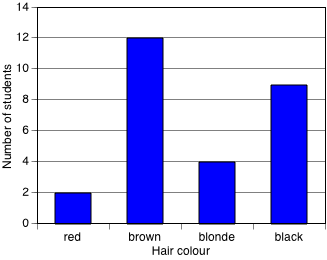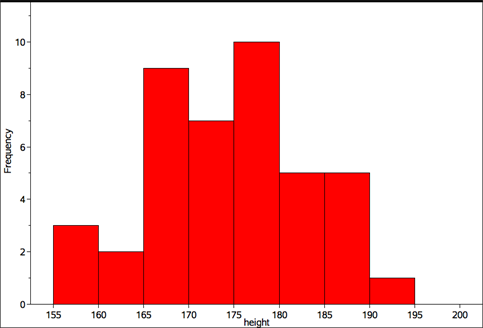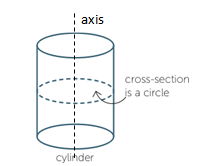Capacity is a term used to describe how much a container will hold. It is often used in relation to the volume of fluids. Units of capacity (volume of fluids or gases) include litres and millilitres.
a grammatical unit that refers to a happening or state (for example, 'The netball team won' [happening], 'The cartoon is an animation' [state]). A clause usually contains a subject and a verb group/phrase (for example, 'The team [subject] has played [verb group/phrase] a fantastic game'), which may be accompanied by an object or other complements (elements that are closely related to the verb – for example, 'the match' in 'The team lost the match') and/or adverbials (for example, 'on a rainy night' in 'The team won on a rainy night').
grammatical or lexical relationships that bind different parts of a text together and give it unity. Cohesion is achieved through various devices such as connectives, ellipses and word associations (sometimes called lexical cohesion). These associations include synonyms, antonyms (for example, 'study/laze about', 'ugly/ beautiful'), repetition (for example, 'work, work, work – that's all we do!') and collocation (for example, 'friend' and 'pal' in, 'My friend did me a big favour last week. She's been a real pal.')
A column graph is a graph used in statistics for organising and displaying categorical data.
To construct a column graph, equal width rectangular bars are constructed for each category with height equal to the observed frequency of the category as shown in the example below which displays the hair colours of 27 students.

Column graphs are frequently called bar graphs or bar charts. In a bar graph or chart, the bars can be either vertical or horizontal.
A histogram is a statistical graph for displaying the frequency distribution of continuous data.
A histogram is a graphical representation of the information contained in a frequency table. In a histogram, class frequencies are represented by the areas of rectangles centred on each class interval. The class frequency is proportional to the rectangle’s height when the class intervals are all of equal width.
The histogram below displays the frequency distribution of the heights (in cm) of a sample of 42 people with class intervals of width 5 cm.

has one or more subordinate clauses. In the following examples, the subordinate clauses are indicated by square brackets: 'I took my umbrella [because it was raining].'; '[Because I am studying for an exam], my time is limited.'; and 'The man [who came to dinner] is my brother.'
has two or more main clauses of equal grammatical status, usually marked by a coordinating conjunction such as 'and', 'but' or 'or'. In the following examples below, the main clauses are indicated by square brackets: '[Jill came home this morning] [but she didn't stay long].'; '[Kim is an actor], [Pat is a teacher], [and Sam is an architect]'.
strategies and processes used by readers to make meaning from texts. Key comprehension strategies include: activating and using prior knowledge; identifying literal information explicitly stated in the text; making inferences, based on information in the text and their own prior knowledge; predicting likely future events in a text; visualising by creating mental images of elements in a text; summarising and organising information from a text; integrating ideas and information in texts; and critically reflecting on content, structure, language and images used to construct meaning in a text.
can include: whole or part of real objects; a miniature version of the real object; photographs; pictures (pictures must clearly depict the object)
a word that joins other words, phrases or clauses together in logical relationships such as addition, time, cause or comparison. There are two types of conjunctions: coordinating conjunctions and subordinating conjunctions. Coordinating conjunctions are words that link words, groups/phrases and clauses in such a way that the elements have equal grammatical status. They include conjunctions such as 'and', 'or' and 'but'. Subordinating conjunctions introduce certain kinds of subordinate clauses. They include conjunctions such as 'after', 'when', 'because', 'if' and 'that'.
a word that joins other words, phrases or clauses together in logical relationships such as addition, time, cause or comparison. There are two types of conjunctions: coordinating conjunctions and subordinating conjunctions. Coordinating conjunctions are words that link words, groups/phrases and clauses in such a way that the elements have equal grammatical status. They include conjunctions such as 'and', 'or' and 'but'. Subordinating conjunctions introduce certain kinds of subordinate clauses. They include conjunctions such as 'after', 'when', 'because', 'if' and 'that'.
the environment in which a text is responded to or created. Context can include the general social, historical and cultural conditions in which a text is responded to and created (the context of culture) or the specific features of its immediate environment (context of situation). The term is also used to refer to the wording surrounding an unfamiliar word that a reader or listener uses to understand its meaning.
the environment in which a text is responded to or created. Context can include the general social, historical and cultural conditions in which a text is responded to and created (the context of culture) or the specific features of its immediate environment (context of situation). The term is also used to refer to the wording surrounding an unfamiliar word that a reader or listener uses to understand its meaning.
can include: speech, actions, formal gesture (eg head nod, shake, wave hello/goodbye), directing others' attention and pointing.
an accepted language practice that has developed over time and is generally used and understood (for example, use of punctuation)
develop and/or produce spoken, written or multimodal texts in print or digital forms
A cylinder is a solid that has parallel circular discs of equal radius at the ends. Each cross-section parallel to the ends is a circle with the same radius, and the centres of these circular cross-sections lie on a straight line, called the axis of the cylinder.
